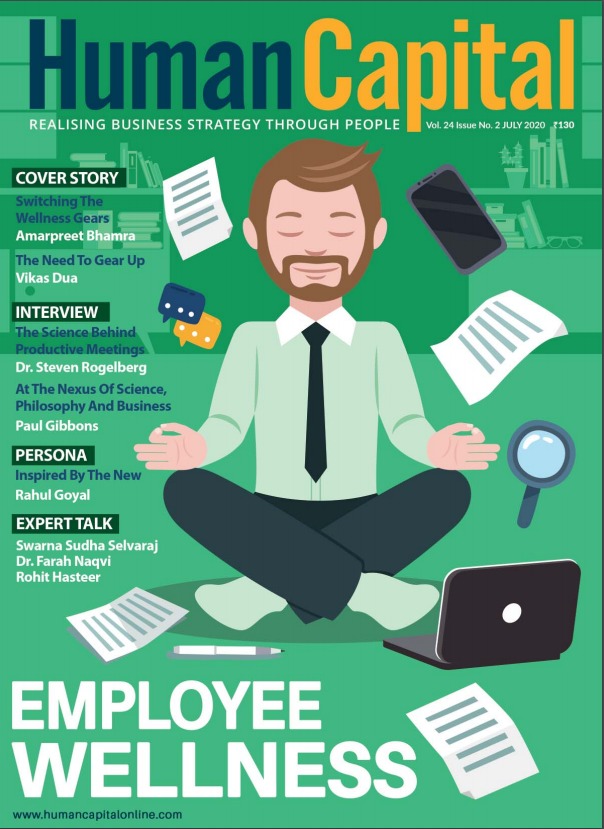Power Distance is emerging as an organisational illness, and the fundamental issue is how one can handle inequalities among people in hierarchical organisations. It is essential to look at the symptoms before we seek treatment.
Anamika was very stressed at work, and every Sunday evening, her heart would be throbbing for Friday. She had been working from the comfort of her home for a whole year now, and yet, she was being pulled down by her work. What surprised everyone was that her spirits could not be lifted even when her phone beeped indicating that her salary had been credited. Her past indicated an illustrious academic record and more than a decade’s work experience. Intelligent, articulate and strong in communication, anyone would expect her to scale peaks in her career with ease. Then what was Anamika suffering from? Why was her confidence getting shattered? Why was she unable to pick herself up every day? A peek into Anamika’s day revealed some shocking truths.
Anamika had a reporting manager who believed that team members are required to perform only under instructions. She would question any independent thinking by a team member and would disregard any new idea that came from those who are lower in the hierarchy. Anamika struggled to get across her view point and was always afraid of being ridiculed by her manager. Over a period of time, her perception of being controlled by her manager grew and affirmed as a belief. She had slipped into a zone of self-doubt, thanks to the strong cultural element of ‘Power Distance’ that was at play at her workplace.
A normal organisation and a standard reporting structure. One may ask, ‘What’s power distance?’
Power Distance is a dimension which measures the degree to which the less powerful members of a society accept and expect that power is distributed unequally.
In a society or even in organisations, Power Distance is manifested by managers by keeping information close to their chests, expecting to review anything and everything that is being shared and so on.
Organisations exhibiting a large degree of Power Distance accept a hierarchical order in which everybody has a place and which needs no further justification. In organisations with low Power Distance, both managers and team members believe that there is equal distribution of power and also strive to equalise it and demand justification for inequalities of power, if noticed.
Power distance is emerging as an organisational illness, and the fundamental issue is how one can handle inequalities among people in hierarchical organisations. It is therefore essential to look at the symptoms before we get into the treatment and the preventive measures.
Symptoms of Power Distance
1. Everything strictly by the organisation chart! The distribution of work running along the thick lines and walking along the dotted lines of the organisation chart are indicative of high power distance. When decisions wait for the decision maker, when there is fear of consequence to step into the shoes of the decision maker even for just handling a situation demonstrate existence of high power distance. High power distance is associated with centralised decision-making, whereby, leaders do not ask for the opinions of others in the team and the team rarely challenges the decisions made by the leadership.
2. No room for opinions in communication channels! When top-down communication is for action and delegation and bottom-up communication is for seeking approvals and reporting results alone, it is a symptom of high power distance.
3. I do not have control of what I am doing! People at the bottom of a low power distance organisation have a feeling of independence on their leaders. In a high power distance setting, people at the bottom are carefully controlled and monitored. Where power distance is high, people may expect leaders to provide specific direction and feel lost when faced with ambiguity or adversity.
How does one treat organisations with high power distance?
There was a recent article by Randstad1 , elaborating the ways in which Power Distance can be reduced in organisations. Obviously, it is a cultural change, and therefore, cannot be achieved in a day. There is no magic, instead, there is a method to drive this mindset change. A trusted and time-tested method is in the process that helps breakdown hierarchies and flatten the communication framework in high power distance organisations. Here is how it works: -
1. Create open forums with equal participation for project feedback: Forums which encourage fearless communication will work as levelers. Initially, managers might need to coax and cajole team members to voice their views and instil confidence in them that they will not be judged or criticised. Gradually this becomes a practice when the outcomes stand testimony to the reduced power distance.
2. Develop networks of cross functional teams that drive high levels of collaboration: Seamless collaboration between different functional teams is essential to innovation. Building dynamic networks of crossfunctional teams that are enabled with interactive systems for communication can increase the levels of collaboration.
3. Build an easily accessible knowledge sharing portal and ensure active participation: A highly accessible and open knowledge sharing portal with a high level of interactivity can drive innovation and reduce Power Distance. Often, breakthrough knowledge is hidden in the minds of people on the floor who are otherwise thought to be inconsequential to the general strategic scheme of things. When executives spot such ideas in a forum where everyone contributes equally, they can pick up and prioritise actions based on such information to make strategic shifts and drive innovation.
Benefits of Low Power Distance2
Julie Diamond has referred to the Hofstede’s cultural models and has chronicled the benefits and challenges of power distance in organisations. To summarise her findings, in a low hierarchy organisation, for instance, an employee’s level of responsibility in the organisation is higher, and thus, there tends to be more engagement. Also, having fewer layers of management within low-hierarchical organisations creates greater coordination and speed of communication. Innovation is easier, as is decision-making and implementation.
It is time we teach our children the difference between obedience and respect so that they stop looking at their bosses as benevolent dictators.
.png)
References
1. https://www.randstad.in/workforce360/ archives/4-strategies-to-reduce-powerdistance-using-technology_257/
2. https://medium.com/@juliediamond/ the-benefits-and-challenges-of-lowhierarchy-power-structures
Has COVID-19 forever changed the way we live and work?
Trending
-
SBI General Insurance Launches Digital Health Campaign
-
CredR Rolls Out 'Life Happens' Leave For Its Employees
-
Meesho Announces 30-Week Gender-Neutral Parental Leave Policy
-
Microsoft Unveils Tech Resilience Curriculum To Foster An Inclusive Future
-
60% Indian Professionals Looking For Job Change Due To COVID: Survey
-
SpringPeople And Siemens Collaborate For Digital Transformation Push
-
86% Professionals Believe Hybrid Work Is Essential For Work Life Balance: Report
-
Almost 1 In Every 3 People's Personal Life Affected Due To Work Stress
-
Meesho Rolls Out Reset And Recharge Policy For Employees
-
80% Of Talent Leaders & Academics Say Pandemic Changed Skill Needs For Youth: Report
-
Hero Electric Rolls Out 'Hero Care' Program For Employees
-
Human Capital In Collaboration With ASSOCHAM Hosts Virtual Conference
-
IKEA India, Tata STRIVE Collaborate To Create Employability And Entrepreneurship Opportunities
-
SAP India, Microsoft Launch Tech Skilling Program for Young Women
-
DXC Technology, NASSCOM Collaborate For Employability Skills Program
-
Lenskart To Hire Over 2000 Employees Across India By 2022
-
Mindtree Launches Learn-and-Earn Program
-
Tata AIA Extends 'Raksha Ka Teeka' To Its Employees
-
Swadesh Behera Is The New CPO Of Titan
-
NetConnect Global Plans To Recruit 5000 Tech Professionals In India
-
Hubhopper Plans To Hire 60% Of Indian Podcasters By 2022
-
Corporate India Needs More Women In Leadership Roles: Report
-
Aon to Invest $30 Million and Create 10,000 Apprenticeships by 2030
-
Tech Mahindra Launches ‘Gift a Career’ Initiative for Upskilling of Youth
-
40% Women Prefer Flexible Working Options in Post-COVID World: Survey
-
3 out of 4 companies believe they can effectively hire employees virtually: Report
-
Vodafone , CGI and NASSCOM Foundation launch digital skills platform
-
Odisha: Bank, postal employees to deliver cash for elderly, differently-abled persons
-
Skill India launches AI-based digital platform for "Skilled Workforce"
-
Hiring activity declines 6.73% in first quarter: Survey
-
70% startups impacted by COVID-19 pandemic
-
Bajaj Allianz Life ropes in Santanu Banerjee as CHRO
-
Over 70 Percent MSMEs look at cutting jobs to sustain businesses
-
93 Per Cent employees stressed about returning to office post-lockdown
-
Johnson & Johnson India announces family benefits for same gender partners
-
Indian firms turning friendly towards working mothers
-
Welspun India names Rajendra Mehta as new CHRO
-
Wipro partners with NASSCOM to launch Future Skills platform



Human Capital is niche media organisation for HR and Corporate. Our aim is to create an outstanding user experience for all our clients, readers, employers and employees through inspiring, industry-leading content pieces in the form of case studies, analysis, expert reports, authored articles and blogs. We cover topics such as talent acquisition, learning and development, diversity and inclusion, leadership, compensation, recruitment and many more.
Subscribe Now












































Comment